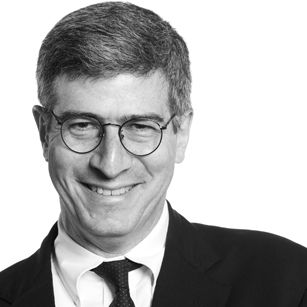

You shall have one law, both for the stranger and people born in the land. Numbers 9:14
Bruce Cahan is a Visiting Scholar at Stanford’s Civil and Environmental Engineering Department, and a CodeX Fellow at Stanford’s Center for Legal Informatics. As an Ashoka Fellow, Bruce is creating GoodBank™(IO), a prototype for high-transparency, impacts-aware commercial banking.
Geospatial Technology Pioneer
Bruce co-founded Urban Logic as a nonprofit in 1991 to improve urban sustainability decisions in real time. Bruce designed a geographic information utility, NYMAP, to see where and what infrastructure, environmental, transportation and emergency response assets and needs coexist. At first, City Agencies resisted pooling data, resting on their information fiefdoms. Through Bruce’s research and advocacy with the Mayor’s Office of Operations and Budget Office, he found $100 million in the City’s capital budget to create NYCMAP, that is the cornerstone today for mapping and coordinating NYC operations.
By the mid-1990s, the Federal Geographic Data Committee and the federal Office of Management & Budget learned of Bruce’s success in NYC. With federal grants to Urban Logic, Bruce researched how to finance the nation’s geographic information as infrastructure. Bruce’s adaptive design led OMB to adopt a 49-state initiative to share open, standardized geographic information, much of which is accessible now through web services like Google Earth®. http://1.usa.gov/NSDIFinanceStudy
9/11 Emergency Responder
After September 11, 2001’s World Trade Center Attacks, Bruce served as an emergency responder, stationed at the NYC Mayor’s Command Center, acting as liaison for federal geographic and other capabilities. There, Bruce saw firsthand how much knowledge exists about urban conditions, but remains cloistered until a crisis erupts. As a municipal bond and corporate finance lawyer and merchant banker, Bruce realized that safe, “artificial” crises could be created through a credit ratings that reward sustainability and resiliency proactively. http://bit.ly/LearningfromWTCCrisis2004
High-Transparency, Impacts-Aware Banking
Based on his 9/11 experiences, Bruce decided to create a new type of banking, where regional quality of life measures would reward customers’ and business’ sustainable choices, and provide new options for the environmental, public health and other social sector programs implemented by nonprofits and social entrepreneurs. (For more, http://bit.ly/GoodBankinFastCompany and http://bit.ly/CahanFRBSF).
To share his designs for sustainable banking, Bruce curated TEDxNewWallStreet x = an independently organized TED event, where 16 speakers reimagined a “New Wall Street” in Silicon Valley safer, fairer, cheaper and more accountable. Within four months, the Talks attracted over 25,000 views on YouTube: http://bit.ly/TEDxNWS-Playlist Bruce is organizing a second TEDxNewWallStreet for Silicon Valley in 2013, and a synergy TEDxCheapside in London http://www.ted.com/tedx/events/7139.
Infrastructure Renewal
Bruce’s design for financing smart cities doesn’t stop at banking, City Hall, data or the pavement. As a New York subway rider for 25 years, he imagined that small package freight could move through subways, instead of streets. Bruce’s Sub Ex design for undergrounding freight and adding revenues to support mass transit was a finalist in the 2009 Buckminster Fuller Design Challenge, http://bit.ly/SubExBFIFinalist.
Wall Street Lawyer, Hong Kong Merchant Banker, Silicon Valley Mentor
Bruce was trained as an international finance lawyer at Weil Gotshal & Manges (10 years) and managing director at a Hong Kong-based merchant bank (2 years). As a social entrepreneur, Bruce acquired skills as a government technologist, emergency responder and someone who enjoys reconnecting meaning to how the world works. Bruce is frequently sought as a mentor for startups in Silicon Valley, and global speaker.
Education
Bruce graduated The Wharton School at the University of Pennsylvania (B.S. Economics & International Business 1976) and Temple Law School (J.D. 1979), and was admitted to practice law, passing the bar examinations, in California (2006), New York (1980) and Pennsylvania (1980).
Banking lacks the transparency and impacts awareness needed to make banks, customers and their communities safe and healthy.
The GoodBank™(IO) Project will create the financial technology and culture change for bankers to know their underwriting adds to quality of life, and by doing so, makes banks and the banking system safer.
Vidoes recommended by Bruce

 Alef Arendsen
Alef Arendsen 